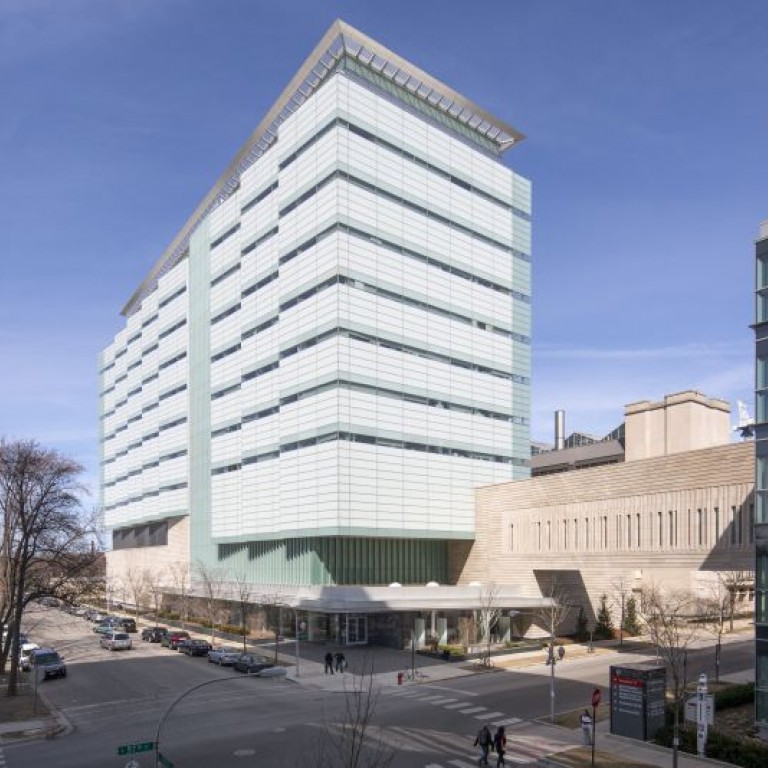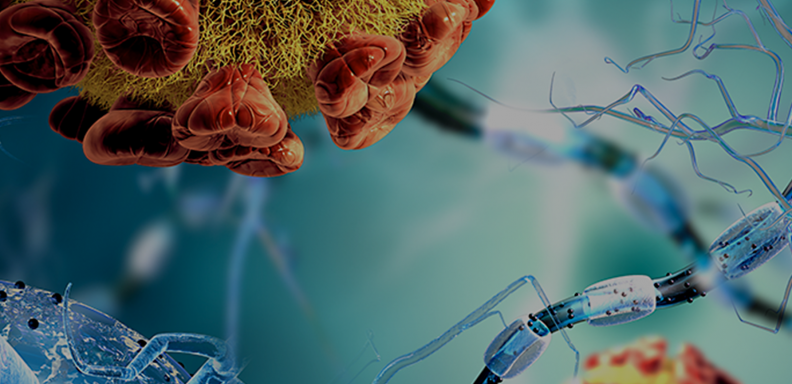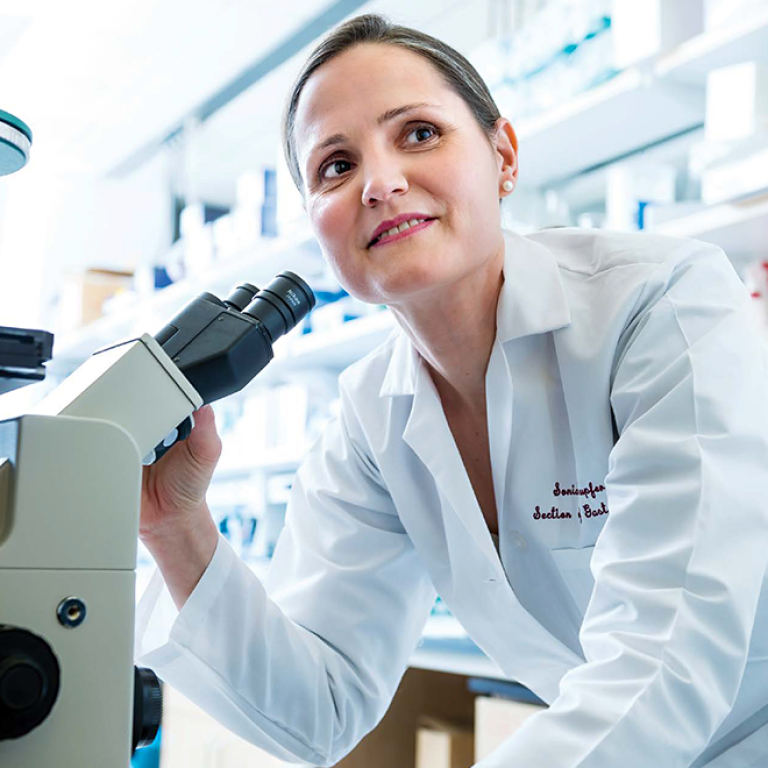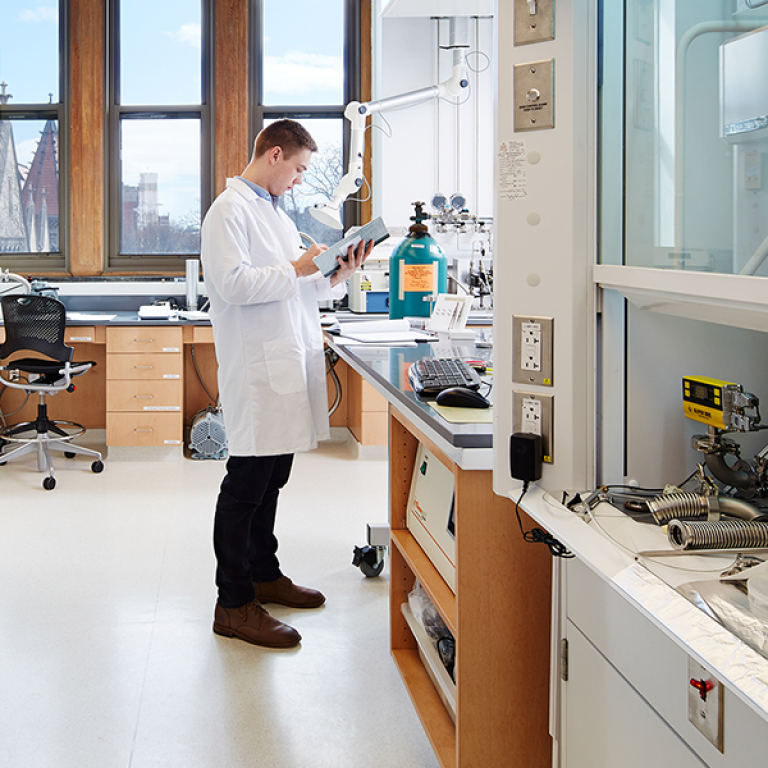The Animal Resources Center (ARC) at the University of Chicago has received a $7.9-million grant from the National Institutes of Health (NIH) which will more than double the size of the Gnotobiotic Research Animal Facility (GRAF). The grant, a C06 Award submitted by George Langan, DVM, and Betty Theriault, DVM, will refit 5,640 square feet of space in the Abbott and Surgery Brain Research buildings.
Established in 2007, the GRAF supports and advances germ free (GF) and gnotobiotic microbiome mouse models for faculty research, becoming one of the largest and most successful academic gnotobiotic mouse facilities internationally. Basic science and translational research at UChicago in areas such as the microbiome, gastrointestinal diseases, immunology, diabetes, metabolism, obesity, neonatal disorders, ocular disorders, neurosciences, cardiovascular diseases, cancer, and transplantation research now all rely on GRAF.
A rapidly expanding area of research
A GF mouse has no microorganisms associated with it, living on its skin, for example, or in its digestive tract. Scientists rear GF animals from birth in a sterile/GF environment. The GRAF uses specialized equipment, including both Flexible Film Isolators and hermetically sealed individually ventilated cages as enclosures. All food, bedding, water, and enrichment is sterilized before being introduced into the animals’ environment. GRAF technicians provide husbandry support, as well as perform experimental manipulations for faculty. Often this means adding a defined microbiota back to the environment to tease out the role the microbiome plays in health and disease, a rapidly expanding and high priority area of research.
GRAF’s success is rooted in Theriault’s approach, as director of the facility, to collaborative, adaptive, and innovative facility use, resource allocation, and study support. She received mentorship from leaders in the field such as Philip Trexler, inventor of Flexible Film Isolator housing, and founder of many modern gnotobiotic practices. Trexler’s approach was not to place experimental equipment into existing isolator design necessarily, but rather innovate how to adapt isolator technology to contain equipment based on experimental needs.
Spring-boarding from this concept, Theriault has approached supporting research within the GRAF with a similar perspective; first discuss the aims of the research with the scientists, leverage the GRAF’s expertise and prior experiences, and innovate strategies and practices to overcome procedural risks for contamination. In so doing, the researchers utilizing the GRAF have been leaders in diverse fields of biomedical and microbiome research. Multiple examples of first in field development of animal models or discoveries using innovative methodology can be found in publications from the laboratories of Maria-Luisa Alegre, Eugene Chang, Alexander Chervonsky, Erika Claud, Tatyana Golovkina, Bana Jabri, Catherine Nagler, and Dimitra Skondra, among others.
To highlight one recent innovation Skondra partnered Theriault and the GRAF to transition her specific pathogen free mouse model of neovascular age related macular degeneration (AMD) to establish the first GF mouse model of AMD. This model is a breakthrough development in the field of microbiome studies in ophthalmology and provides a powerful tool for future studies of the connections between the gut and retina, via the microbiome.
Increased flexibility
The new space renovated by this grant funding, named GRAF II, will expand the capabilities of GRAF to meet the growing research needs. It will not only provide additional isolators but will also allow for operational redundancy in autoclave capacity. It also provides the flexibility of increased proximity to researchers and resources now that GRAF will have a major footprint in two campus locations.
Additional support spaces will include dedicated supply/cylinder preparation and autoclave space, storage, laundry, changing rooms, training, office and breakroom spaces. The primary isolator area is supported with a procedure room for experimental preparation and sampling. Four smaller specialty experimental rooms are planned to increase utilization and minimize potential contamination risks for unique research protocols including reverse light-cycles, ABSL1 and ABSL2 studies.
The facility has been planned around a modular approach to support adaptability to changing research needs and priorities. An interim expansion of GRAF occurred in 2021 to bridge capacity until the larger facility can be completed. Construction for the new space is now expected to begin in 2023 and be completed by 2025.

Betty Theriault, DVM
Professor

George Langan, DVM
Associate Dean of Basic Science, Research Resources
Professor of Surgery



